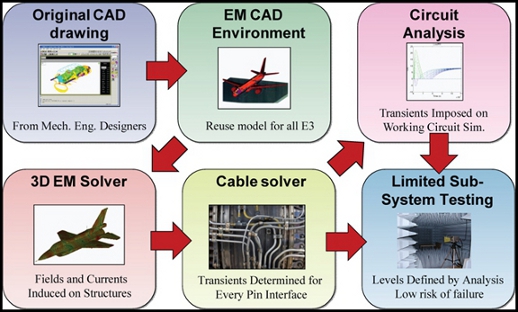Previously, hardening to electromagnetic environmental effects was a long and expensive process that required extensive testing and multiple redesign cycles. For example, to harden avionics to lightning, a vehicle would be exposed to current injection to determine the transients at avionics interfaces. This required full-scale testing of a complete vehicle. This is cost prohibitive in two respects. First, the size and complexity of the testing itself is large. More problematic is that a full-scale test requires that a vehicle be complete in order to determine the test levels for the avionics. Failure during this late phase of design requires an additional design/prototype cycle, which drives up development costs and delays the project substantially.
The size and complexity of the modern aerospace vehicles means that verification by test at the system level is simply not cost effective. The current best-practices approach to verification of complex air and space systems is to perform verification by analysis supported by lower-level subsystem testing. This approach utilizes high-fidelity simulations of the craft in each environment of interest to determine the fields and transients at avionics interfaces. These transients are used in the design of the avionics, in determining terminal protection devices to protect the avionics from the treat, and in final qualification testing to determine if the electronics can withstand the required environments.

